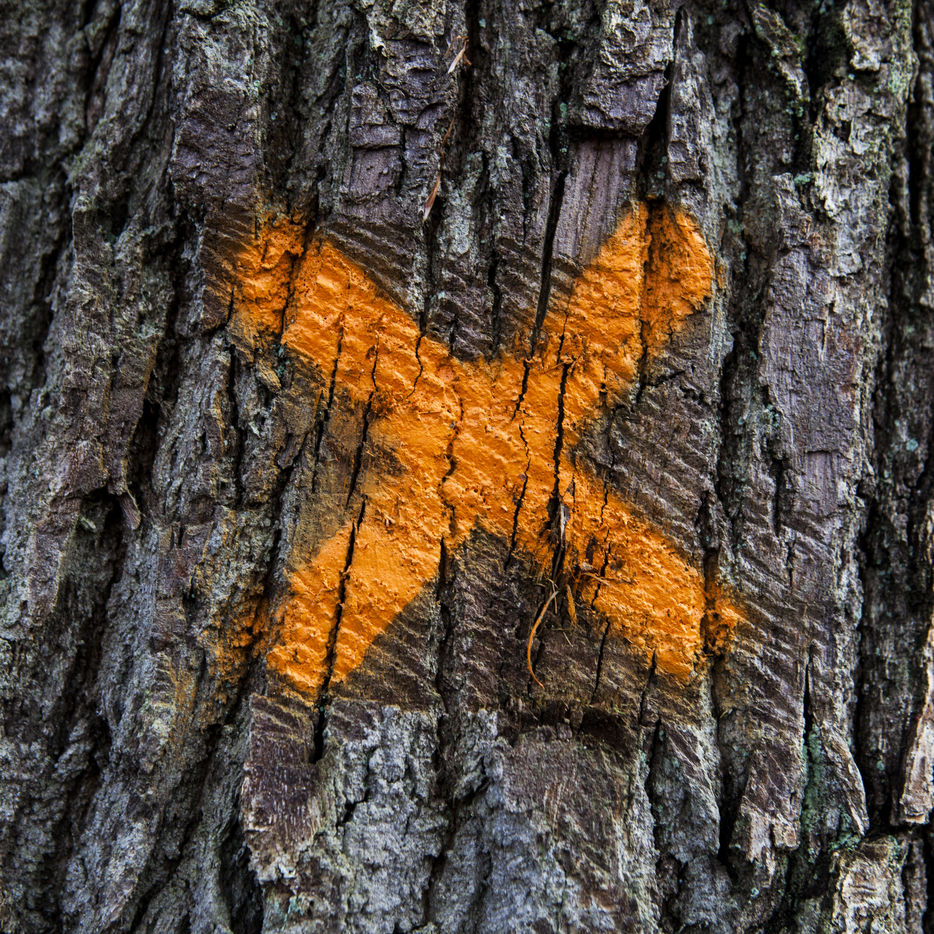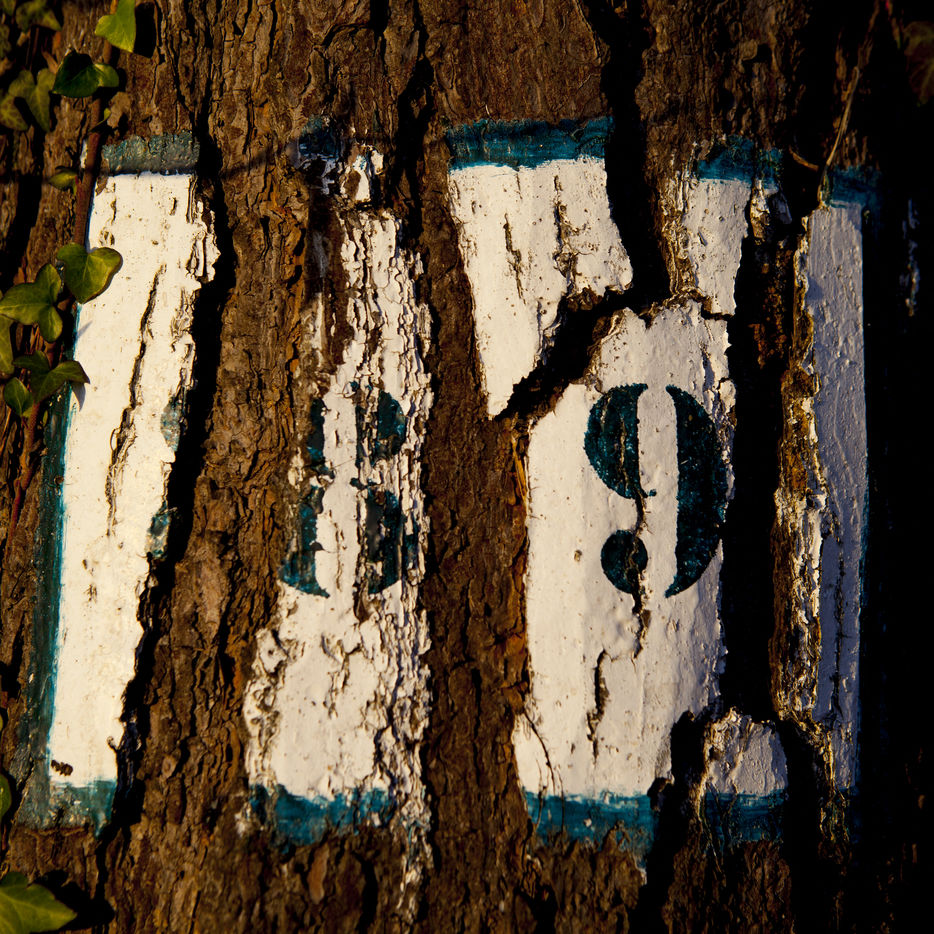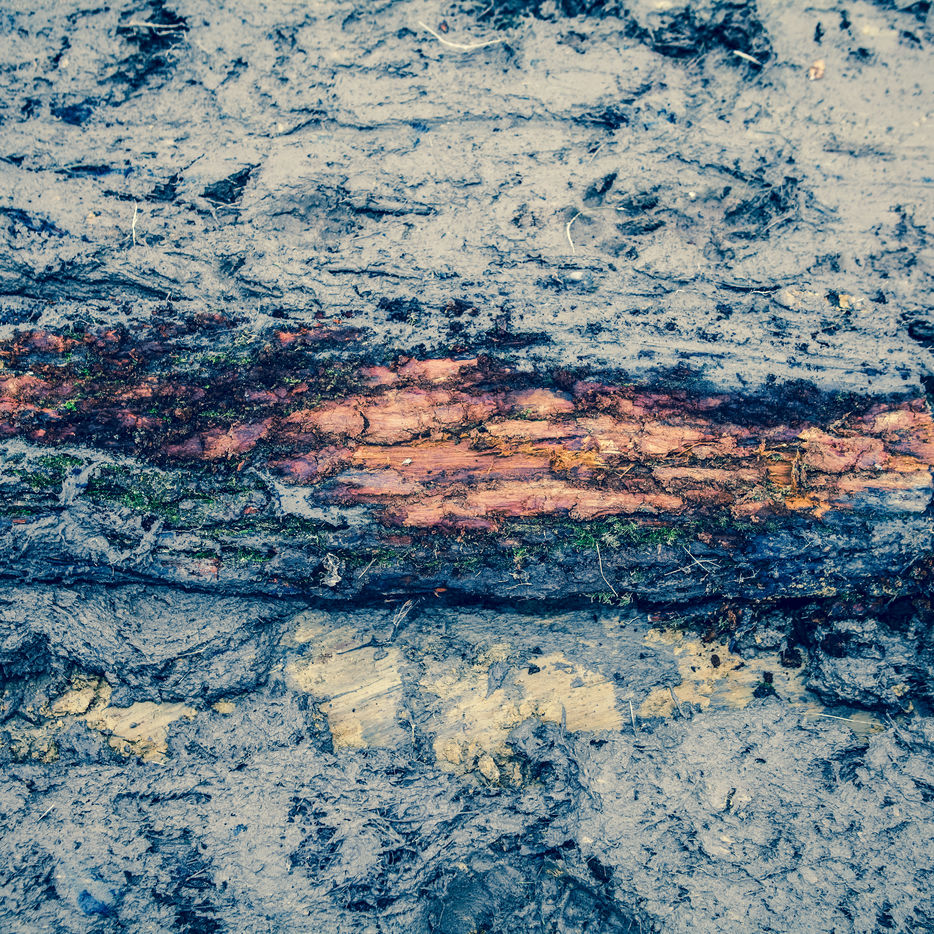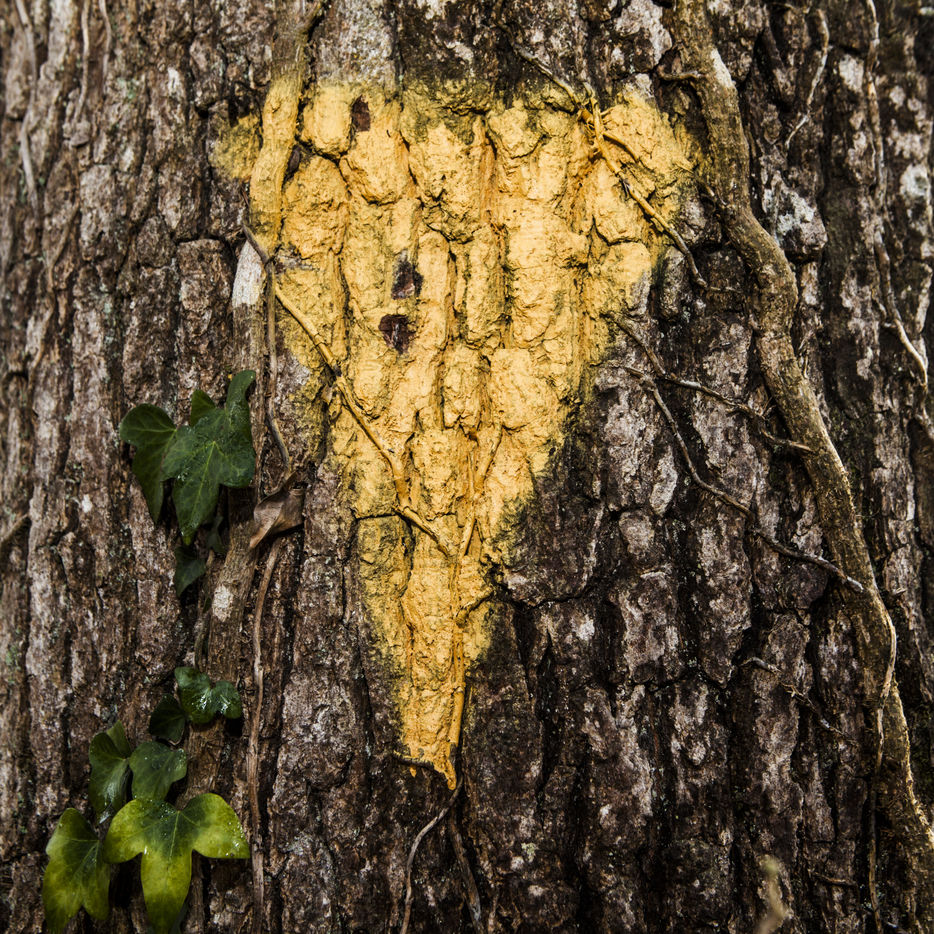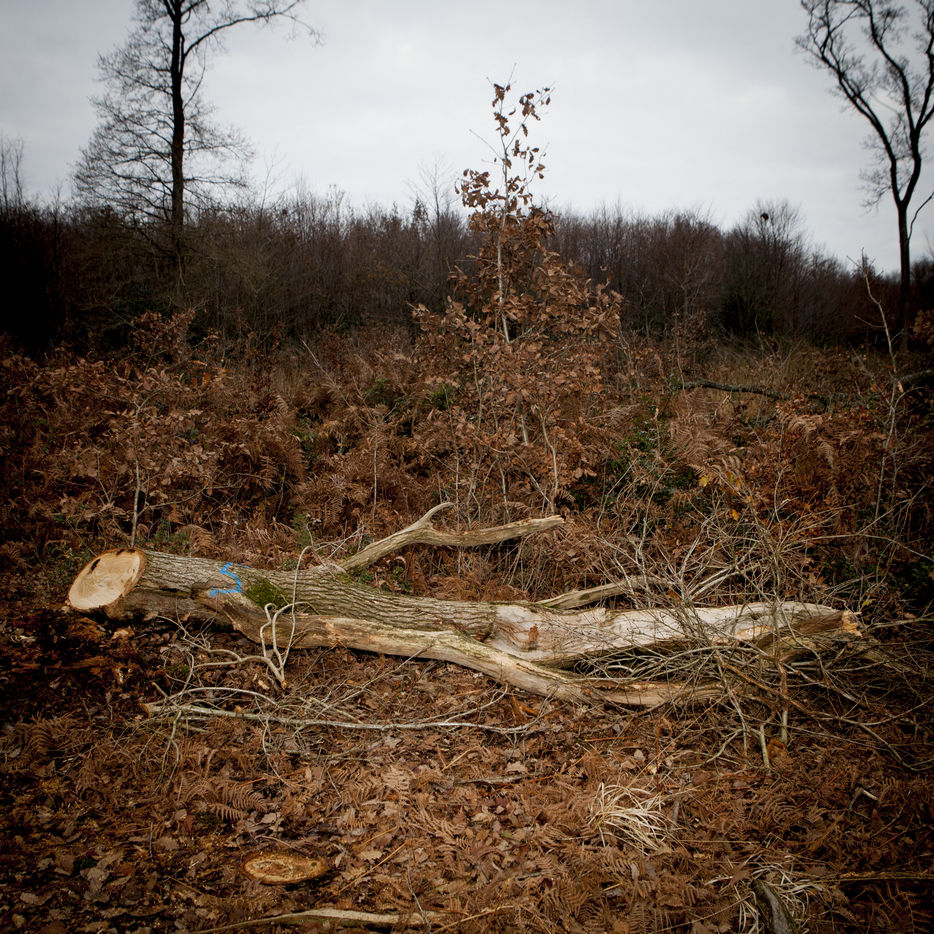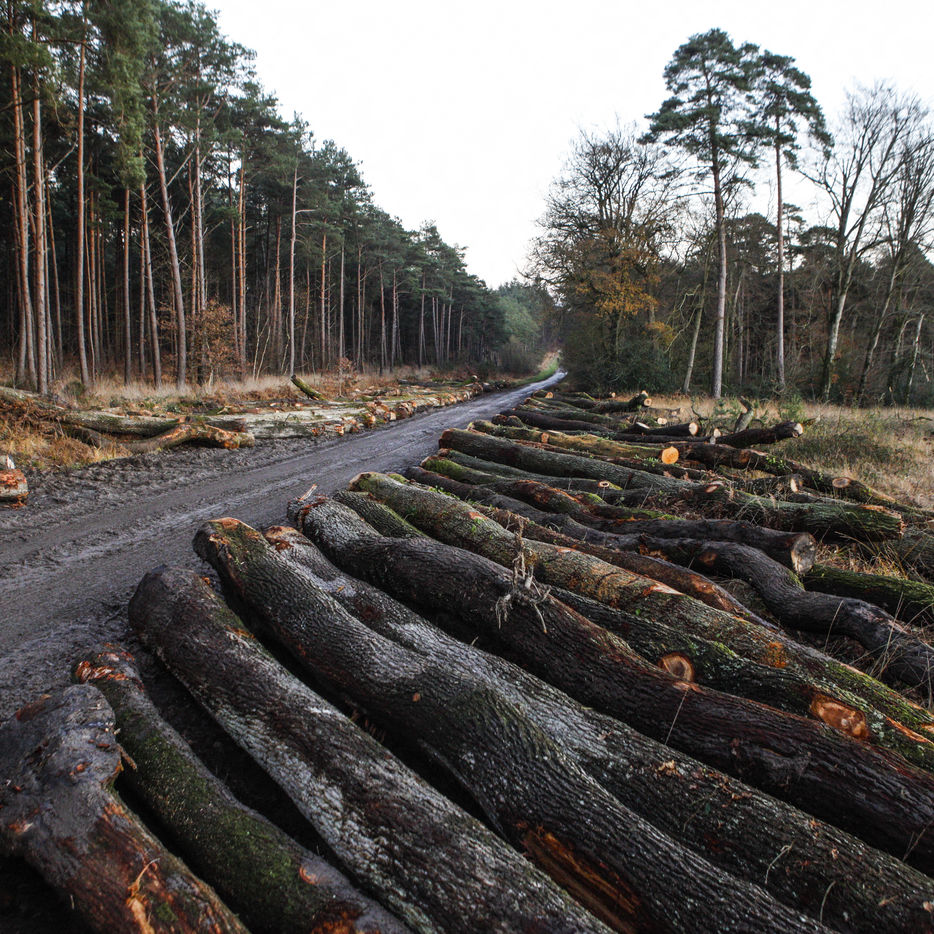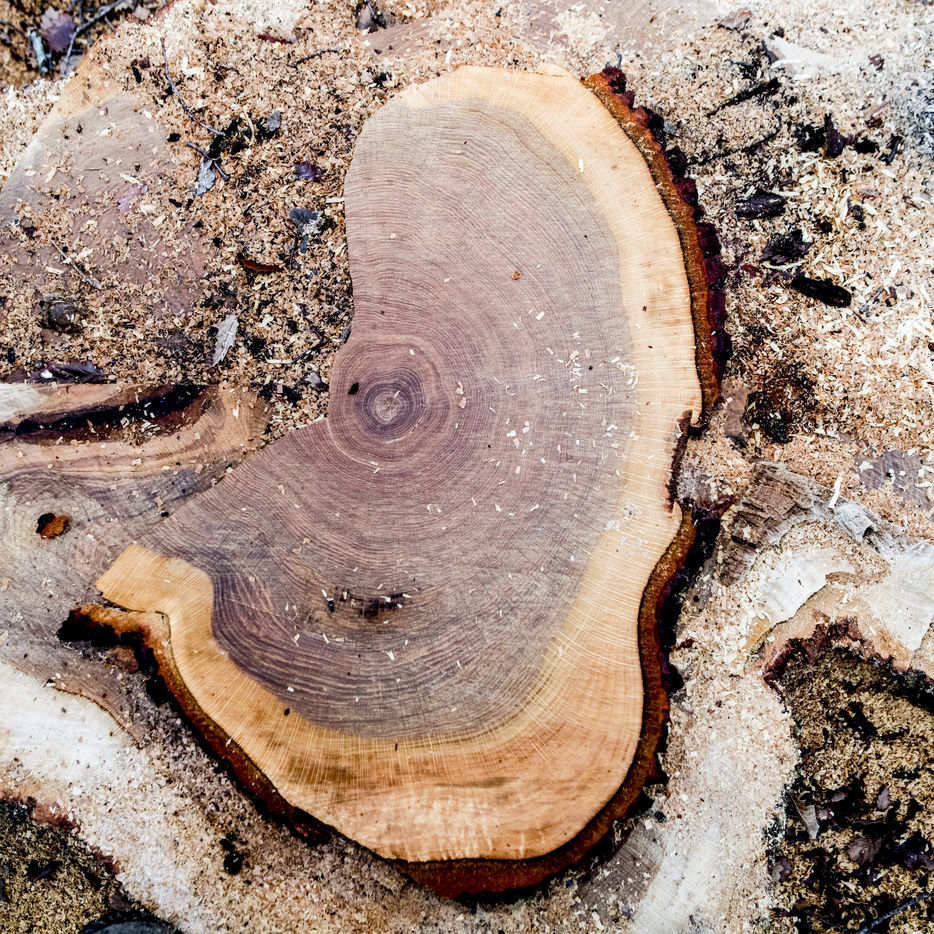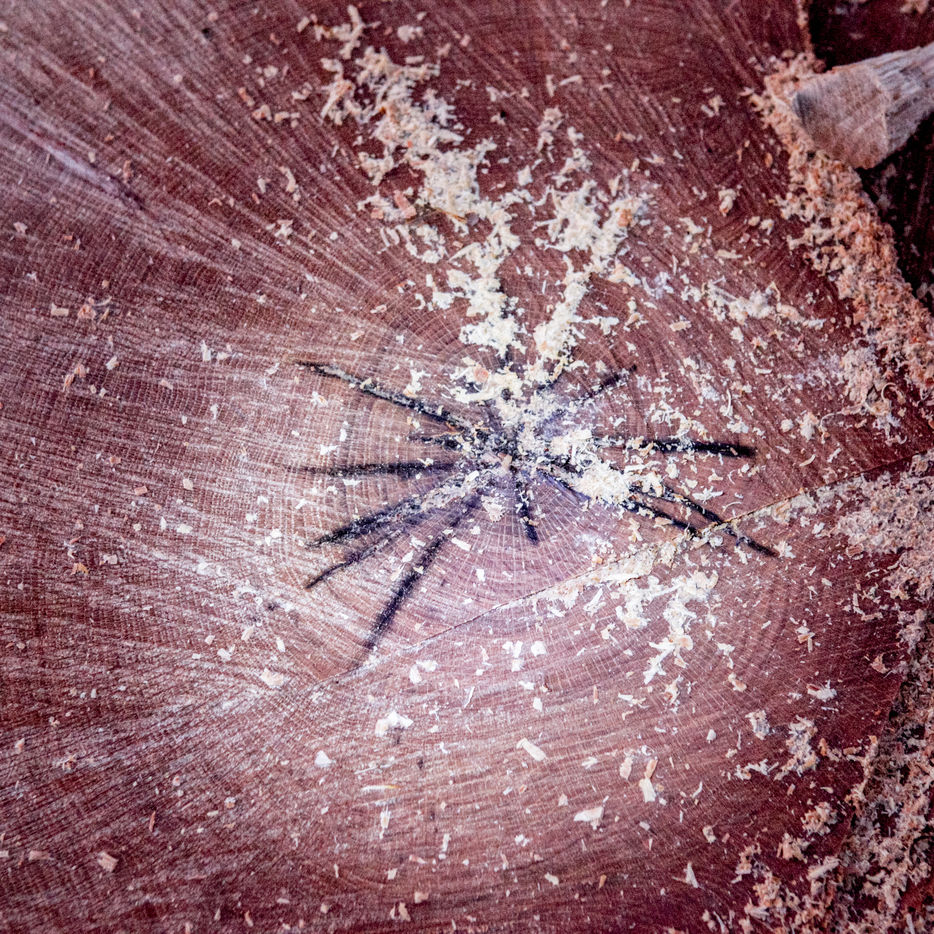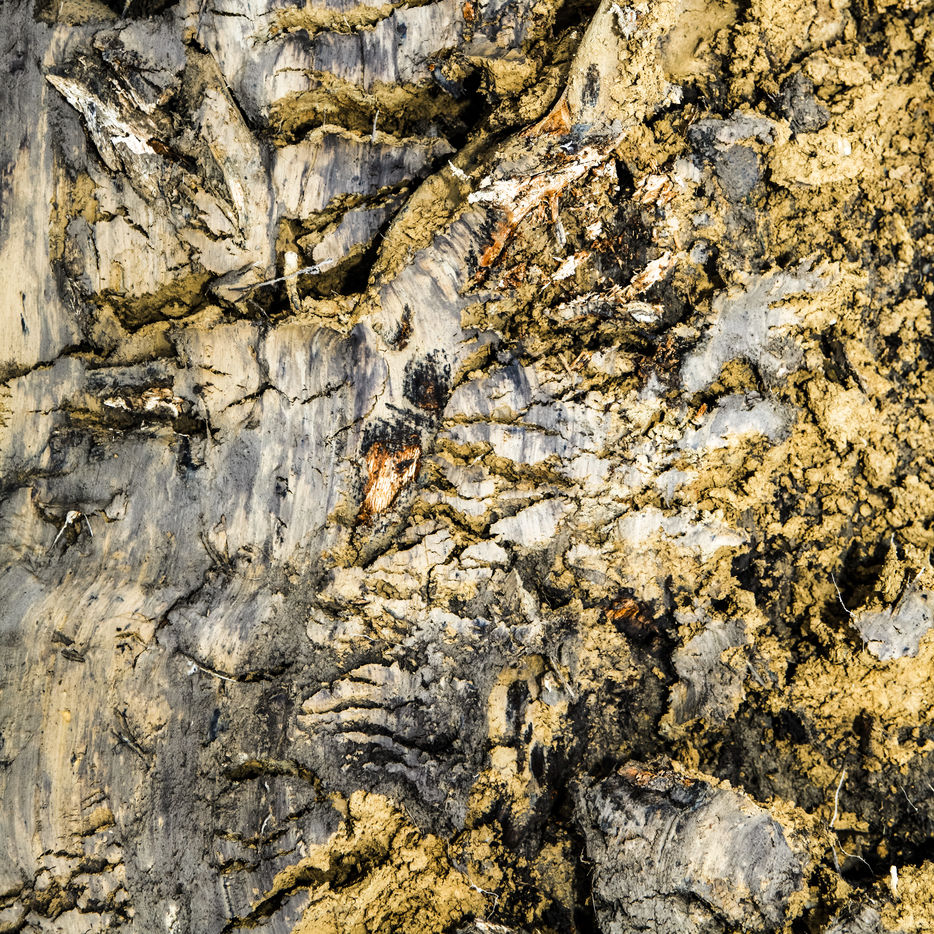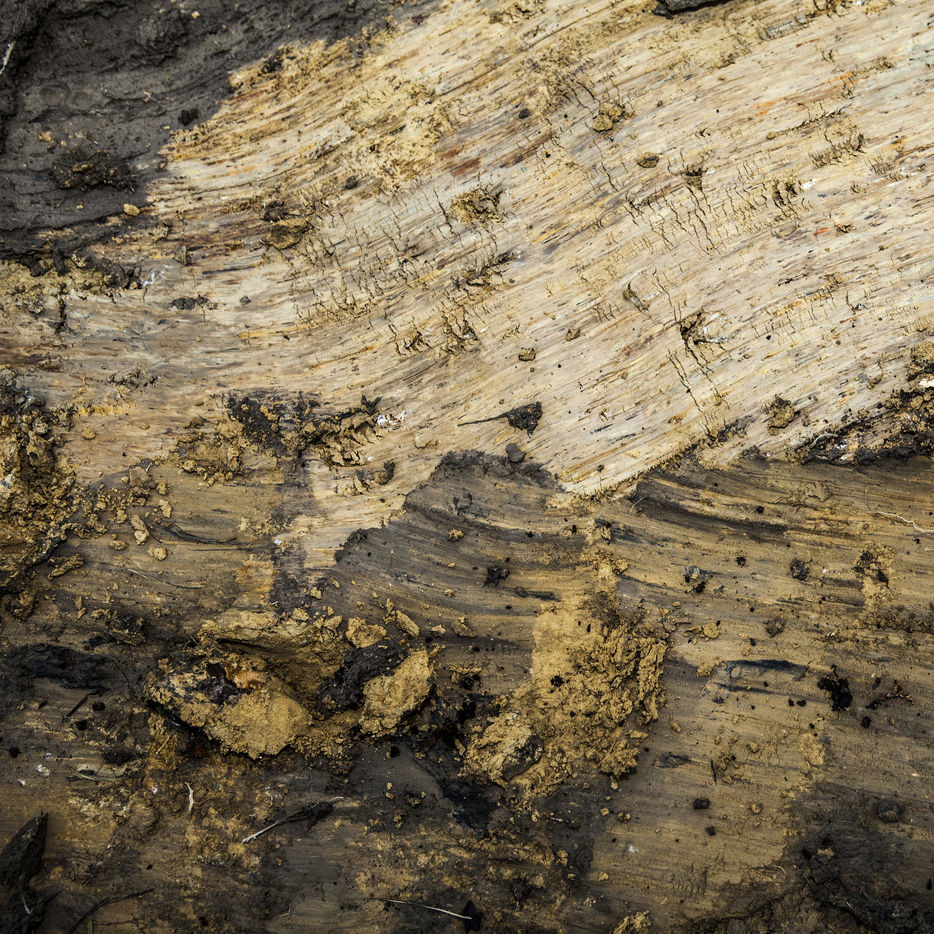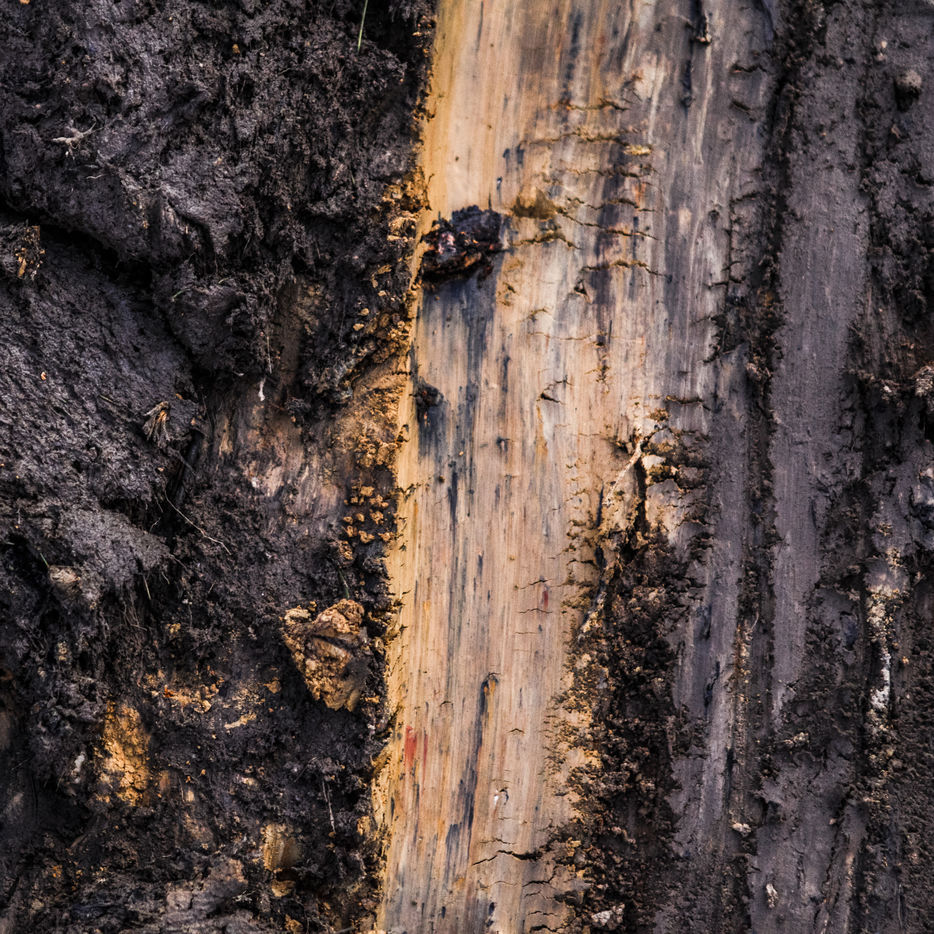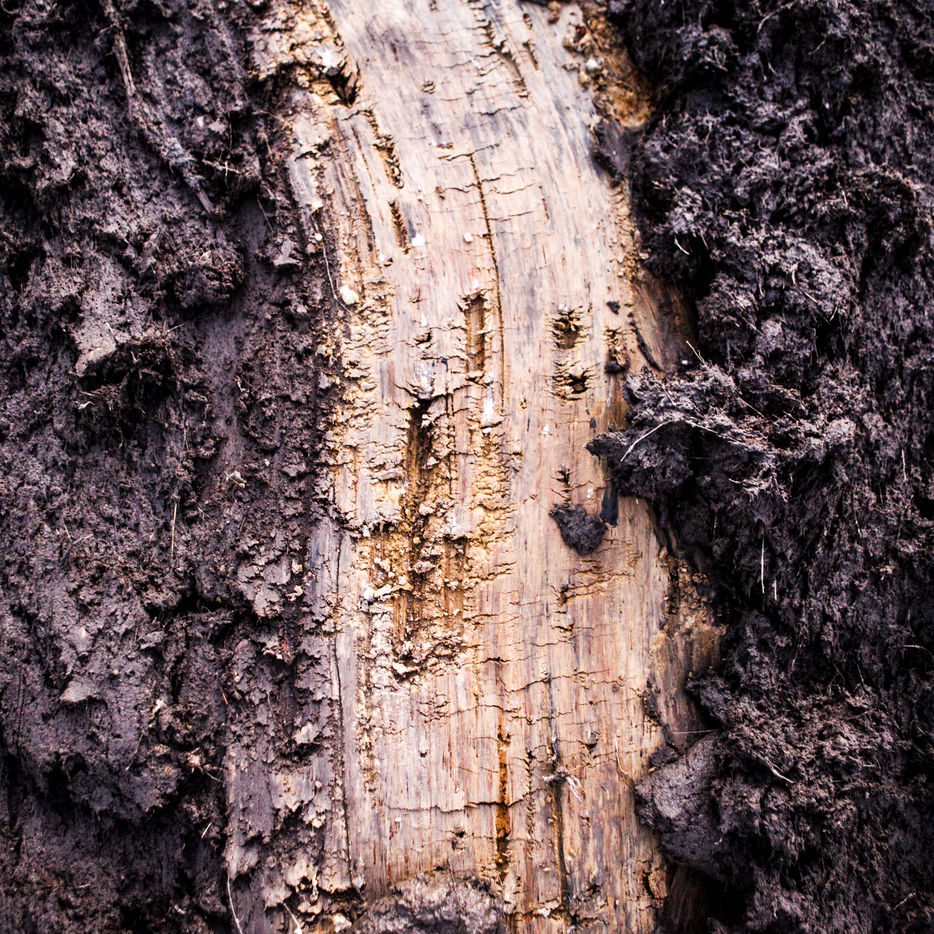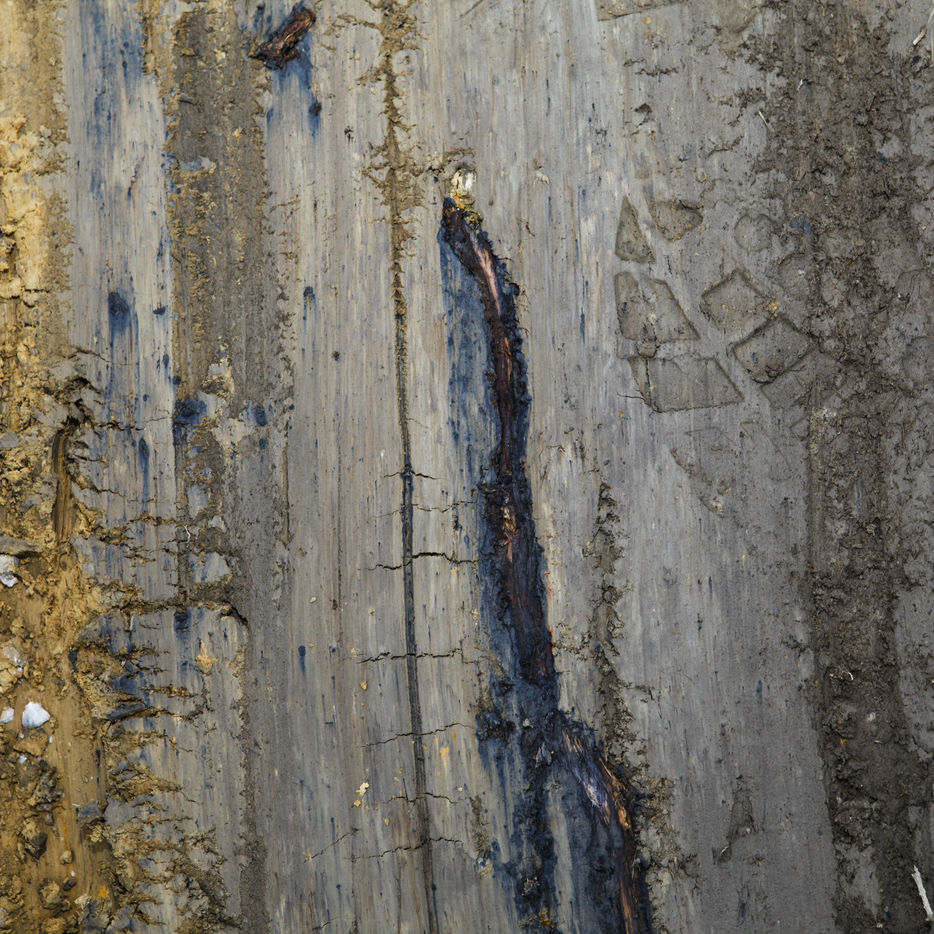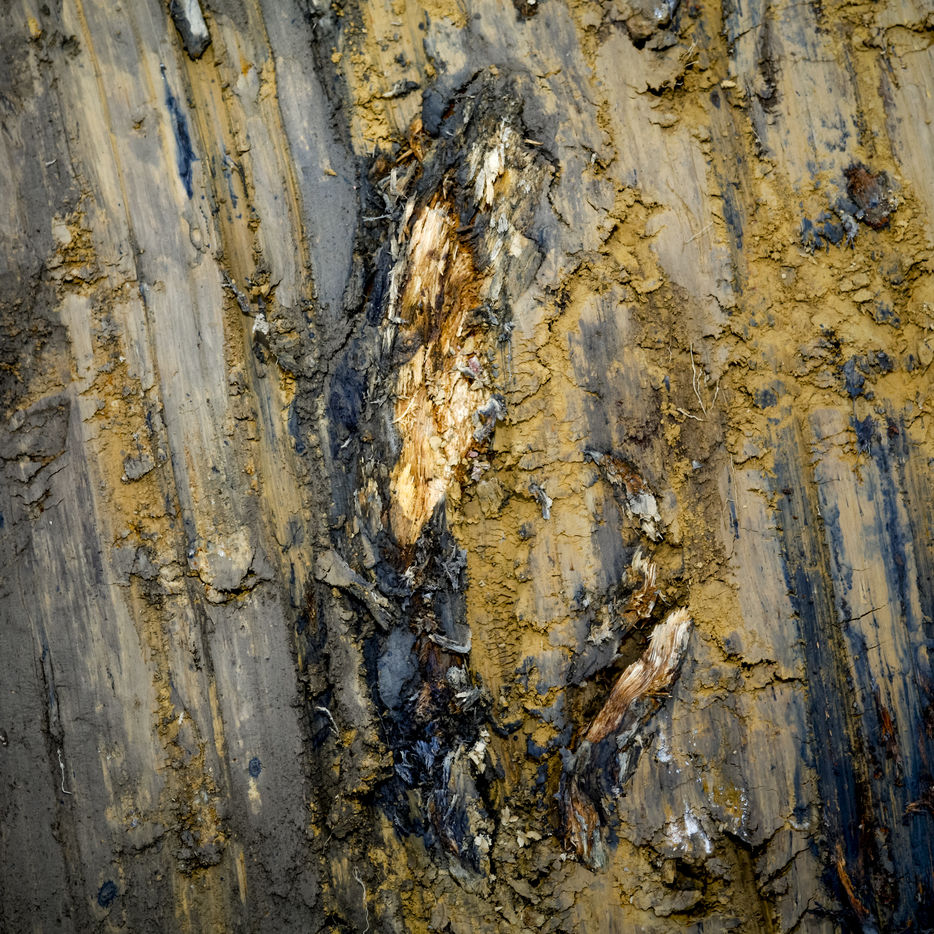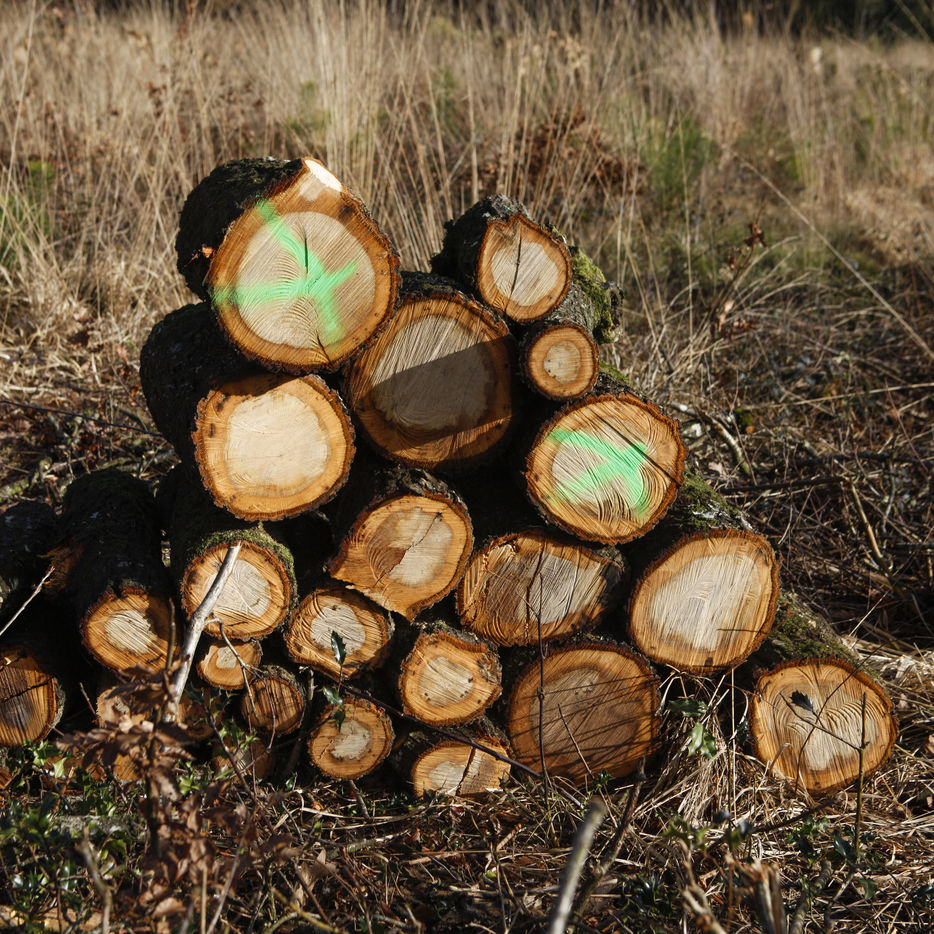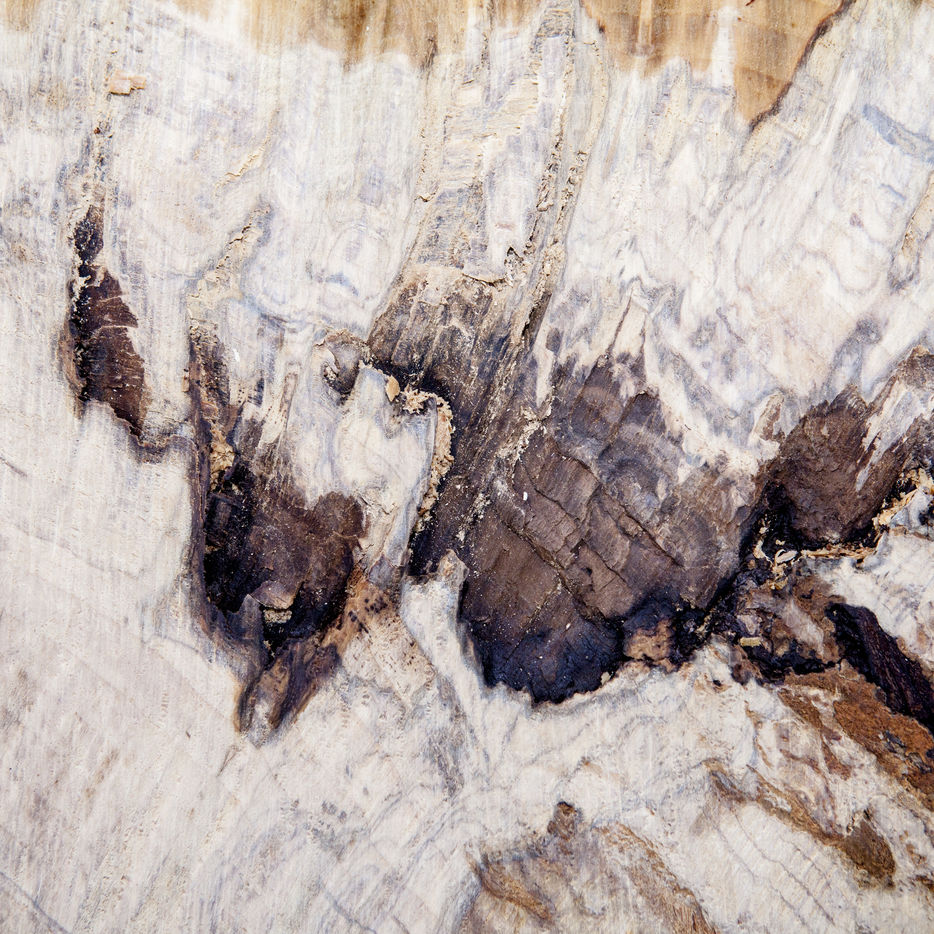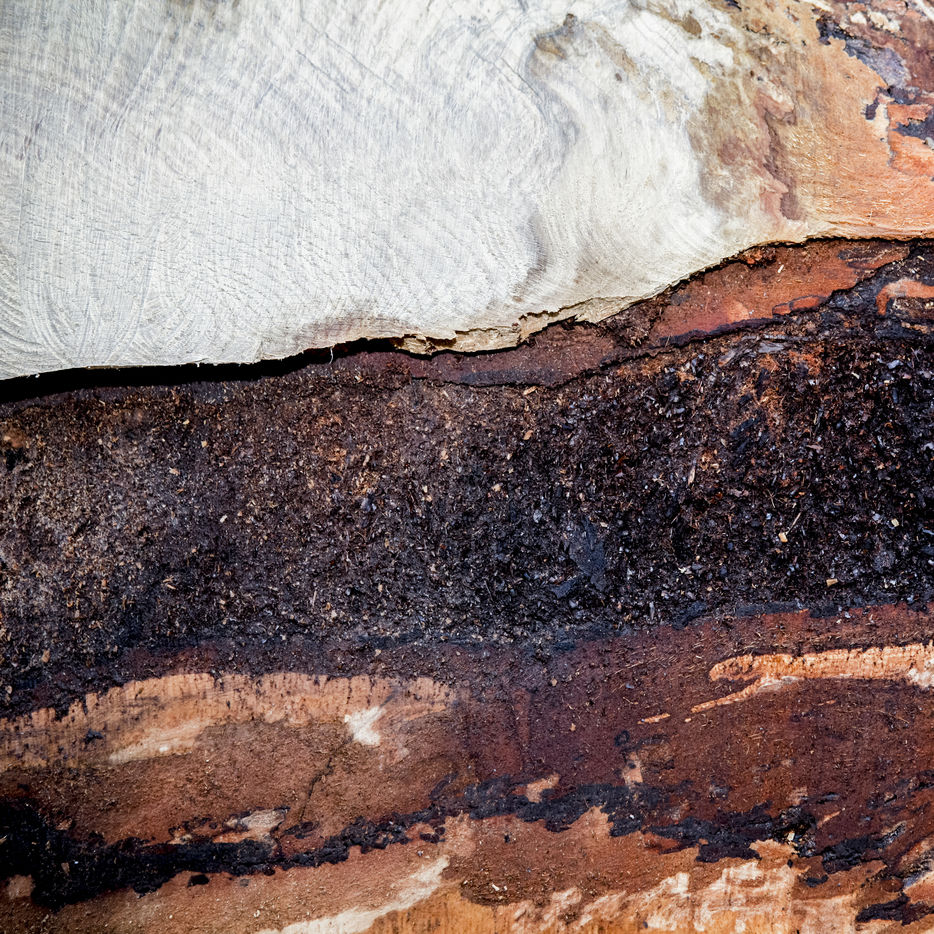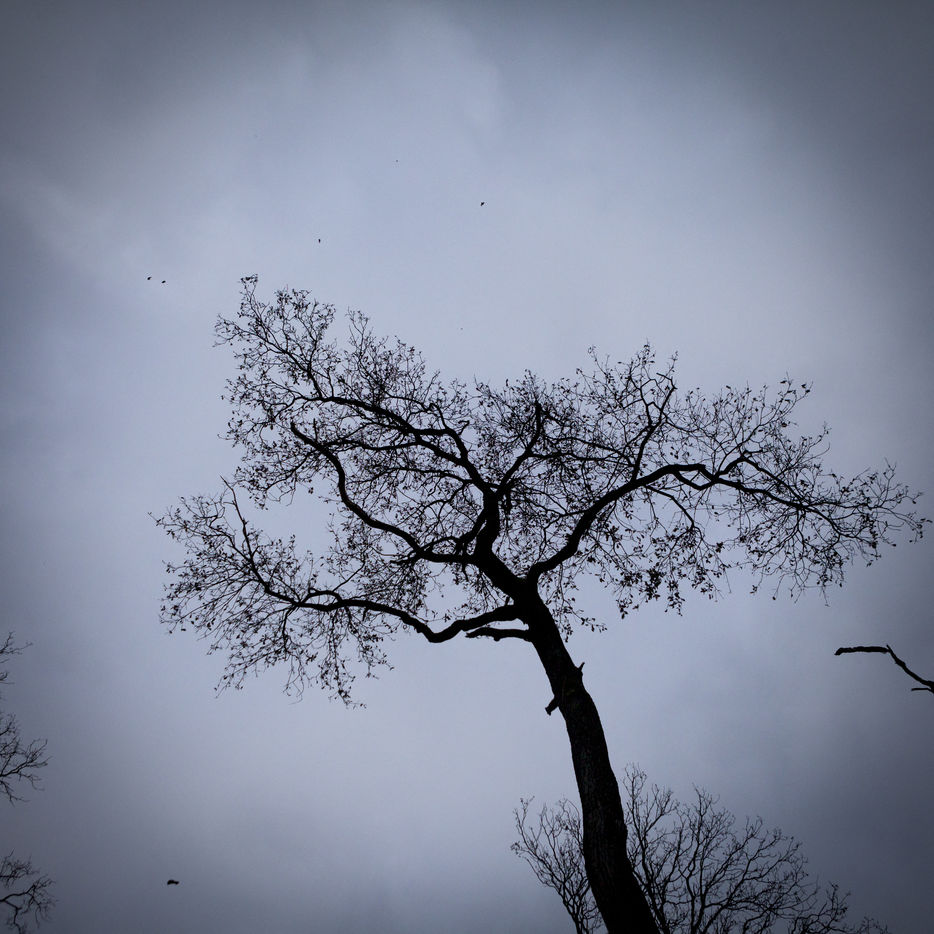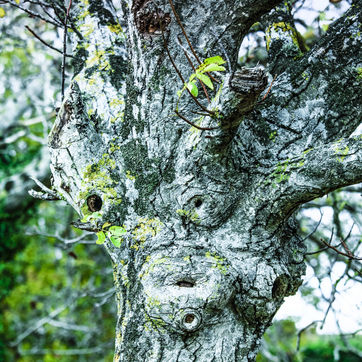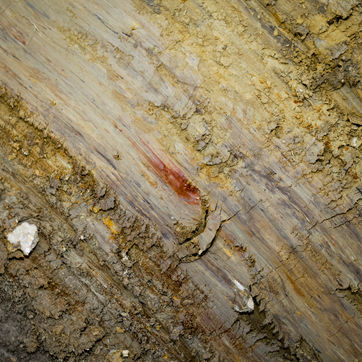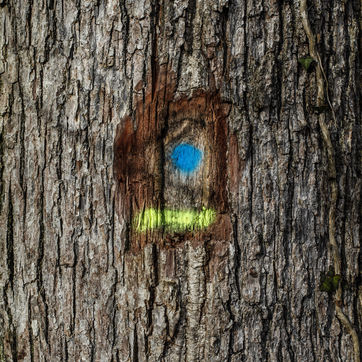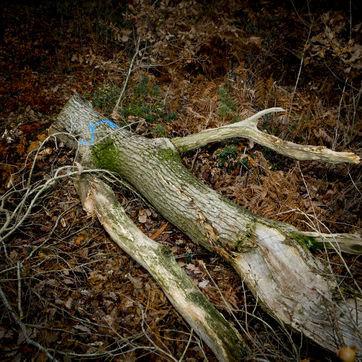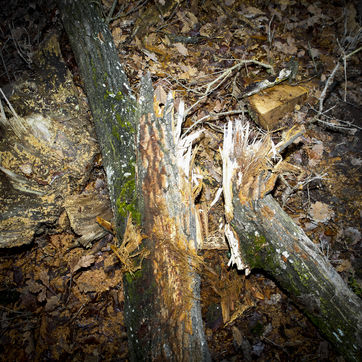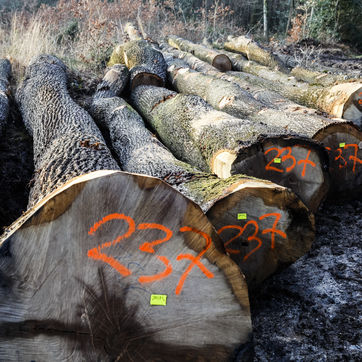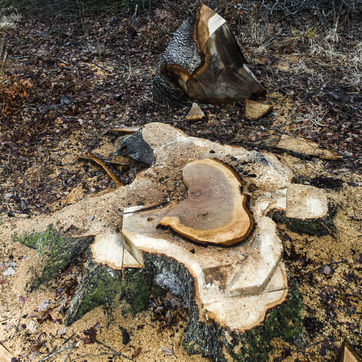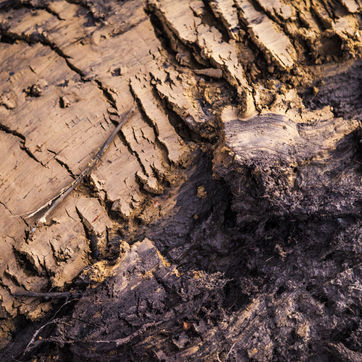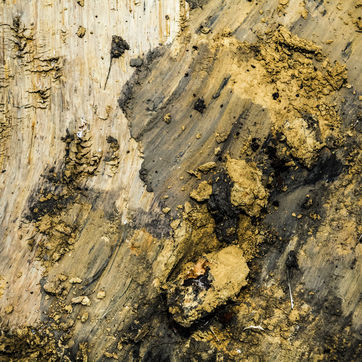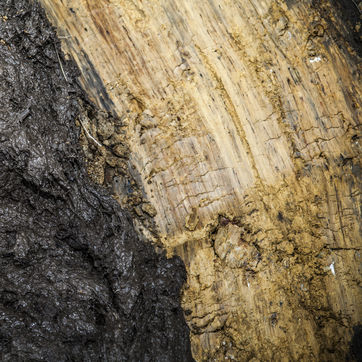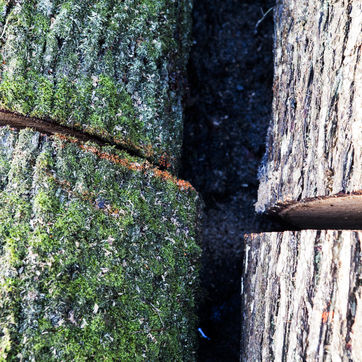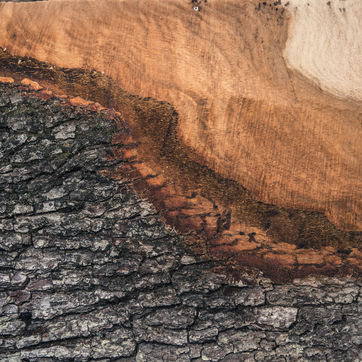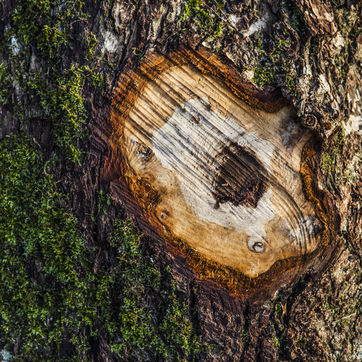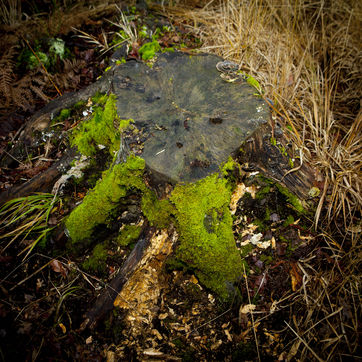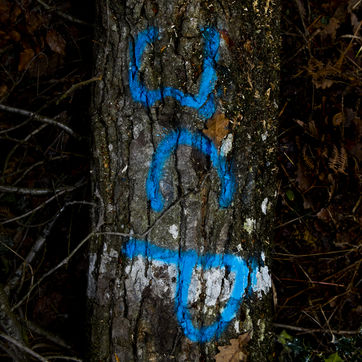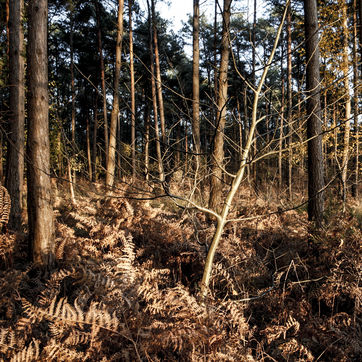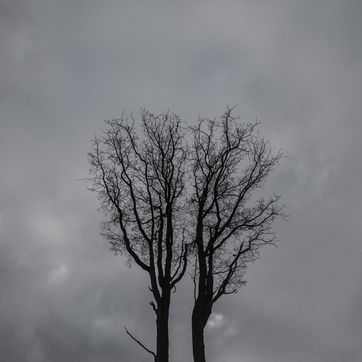Une parcelle en forêt
Pénétrer une forêt et interroger la part de l'humain son agencement...
A première vue, et pour les citadins que nous sommes, la forêt qui ponctue notre territoire peut s'apparenter à un espace naturel. Pourtant, à y regarder de plus près, les traces de la domestication humaine sont aisément perceptibles. La lecture du livre d'Eduardo Kohn « Comment pensent les forêts », puis celui de Peter Wohlleben « La vie secrète des arbres » m'a amené à repenser la place de ces espaces dans notre représentation du monde.
En parcourant la forêt de Rennes, j'ai posé mon regard sur ce qui, dans cet espace, porte trace humaine.
Carré blanc, cercle jaune, croix rouge, triangle renversé, numéros... Les hiéroglyphes fluorescents, peints par les agents de l'ONF (Office National des Forêt), me guident à travers les parcelles.
Revenant quelques jours plus tard, je découvre, alignés, dans l'allée qui borde la forêt, les troncs des grands chênes qui quelques jours plus tôt élevaient dans le ciel leur tête nue.
Perlant de résine comme des gouttes de sang, ils parfument étrangement le matin funèbre.
Je m'aventure dans la forêt éventrée et boueuse. Au milieu des traces des chenilles, celle des troncs traînés dans la glaise. Mon regard s'arrête sur ce qui m'apparaît alors comme les blessures déchirantes de l'âme sylvestre. Dame nature a les tripes à l'air.
Revient-il aux hommes le droit et le devoir d'appliquer à cette nature des méthodes d'exploitation, de gestion et de conservation ?
A plot of forest land
To penetrate a forest and to question the part of the human in the arrangement of its territory ... At first glance, and for the townspeople we are, the forest that punctuates our horizon can be likened to a natural space. Yet, on closer inspection, the traces of human domestication are easily perceptible.
Reading of Eduardo Kohn's book "How forests think : toward an anthropology beyond the human, then the one of Peter Wohlleben "The Hidden Life of Trees" led me to rethink the place of these spaces in our representation of the world. While browsing the forest of Rennes, I put my eyes on what, in this space, carries human trace. White square, yellow circle, red cross, inverted triangle, numbers ... The fluorescent hieroglyphs, painted by the agents of the ONF (National Forest Office), guide me through the plots. Returning a few days later, I discovered, aligned, in the alley which borders the forest, the trunks of the big oak trees which a few days earlier raised in the sky their bare head. Perlant of resin like drops of blood, they perfume strangely the funeral morning. I venture into the gutted and muddy forest. In the middle of tracks of caterpillars, that of the trunks dragged in the clay. My gaze stops on what then appears to me like the heartbreaking wounds of the forest soul. Mother Nature has guts in the air. Does it return to men the right and the duty to apply to this nature methods of exploitation, management and conservation?

